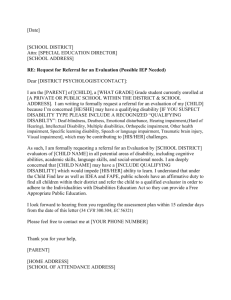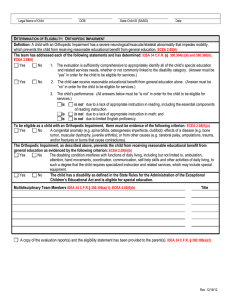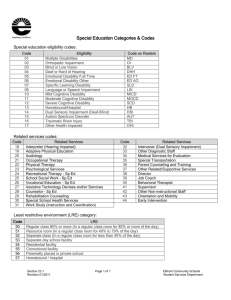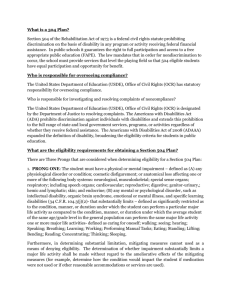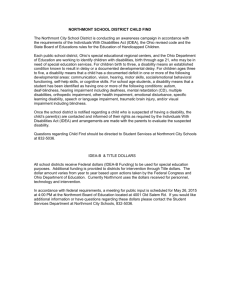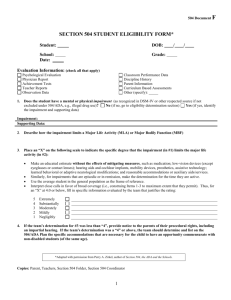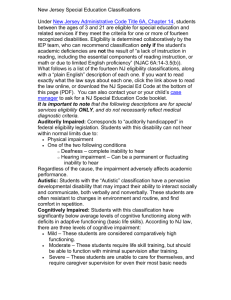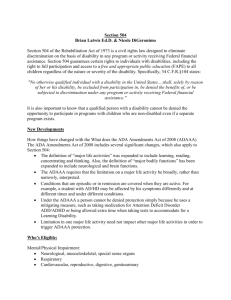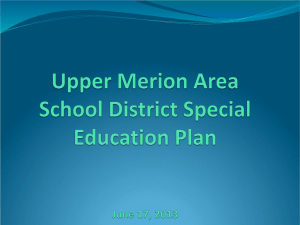Multiple Disabilities
advertisement
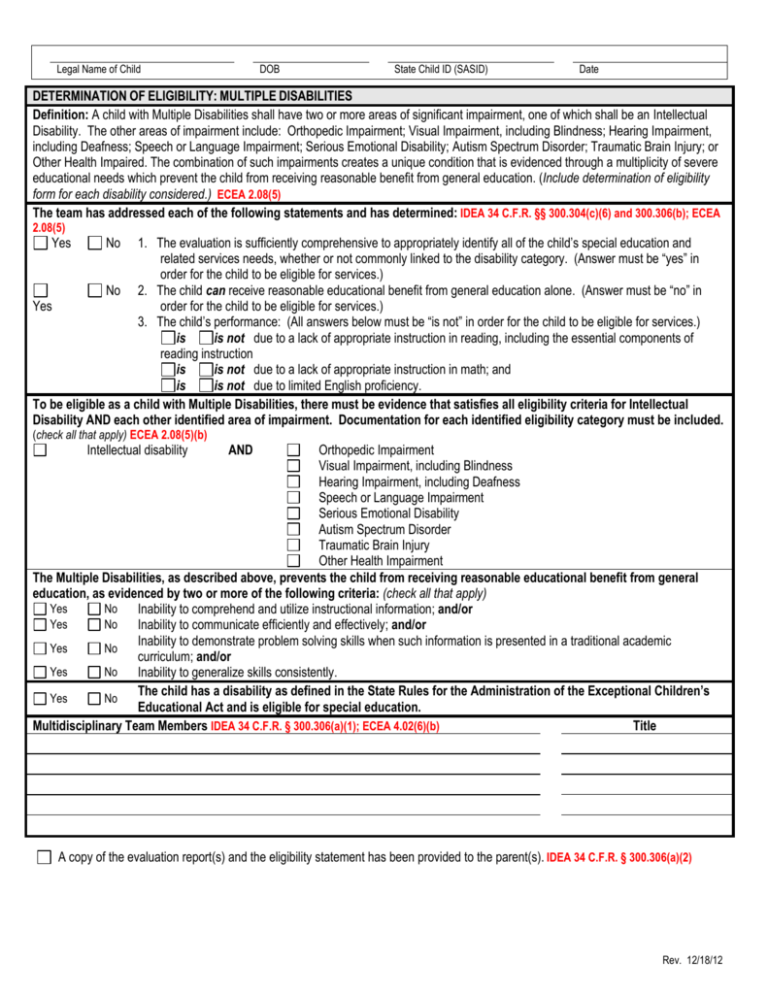
Legal Name of Child DOB State Child ID (SASID) Date DETERMINATION OF ELIGIBILITY: MULTIPLE DISABILITIES Definition: A child with Multiple Disabilities shall have two or more areas of significant impairment, one of which shall be an Intellectual Disability. The other areas of impairment include: Orthopedic Impairment; Visual Impairment, including Blindness; Hearing Impairment, including Deafness; Speech or Language Impairment; Serious Emotional Disability; Autism Spectrum Disorder; Traumatic Brain Injury; or Other Health Impaired. The combination of such impairments creates a unique condition that is evidenced through a multiplicity of severe educational needs which prevent the child from receiving reasonable benefit from general education. (Include determination of eligibility form for each disability considered.) ECEA 2.08(5) The team has addressed each of the following statements and has determined: IDEA 34 C.F.R. §§ 300.304(c)(6) and 300.306(b); ECEA 2.08(5) Yes No 1. The evaluation is sufficiently comprehensive to appropriately identify all of the child’s special education and related services needs, whether or not commonly linked to the disability category. (Answer must be “yes” in order for the child to be eligible for services.) No 2. The child can receive reasonable educational benefit from general education alone. (Answer must be “no” in Yes order for the child to be eligible for services.) 3. The child’s performance: (All answers below must be “is not” in order for the child to be eligible for services.) is is not due to a lack of appropriate instruction in reading, including the essential components of reading instruction is is not due to a lack of appropriate instruction in math; and is is not due to limited English proficiency. To be eligible as a child with Multiple Disabilities, there must be evidence that satisfies all eligibility criteria for Intellectual Disability AND each other identified area of impairment. Documentation for each identified eligibility category must be included. (check all that apply) ECEA 2.08(5)(b) Intellectual disability AND Orthopedic Impairment Visual Impairment, including Blindness Hearing Impairment, including Deafness Speech or Language Impairment Serious Emotional Disability Autism Spectrum Disorder Traumatic Brain Injury Other Health Impairment The Multiple Disabilities, as described above, prevents the child from receiving reasonable educational benefit from general education, as evidenced by two or more of the following criteria: (check all that apply) Yes No Inability to comprehend and utilize instructional information; and/or Yes No Inability to communicate efficiently and effectively; and/or Inability to demonstrate problem solving skills when such information is presented in a traditional academic Yes No curriculum; and/or Yes No Inability to generalize skills consistently. The child has a disability as defined in the State Rules for the Administration of the Exceptional Children’s Yes No Educational Act and is eligible for special education. Multidisciplinary Team Members IDEA 34 C.F.R. § 300.306(a)(1); ECEA 4.02(6)(b) Title A copy of the evaluation report(s) and the eligibility statement has been provided to the parent(s). IDEA 34 C.F.R. § 300.306(a)(2) Rev. 12/18/12


